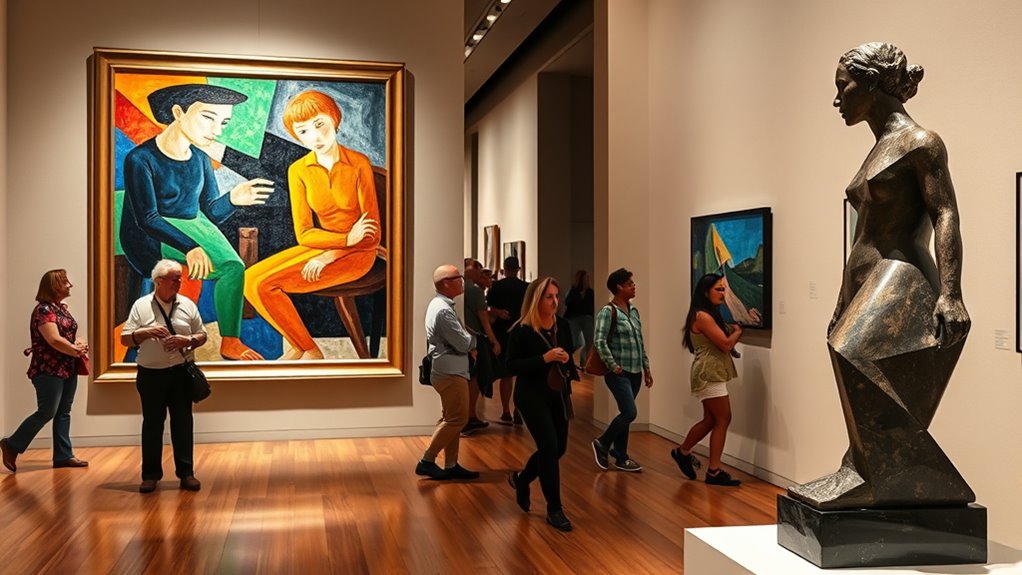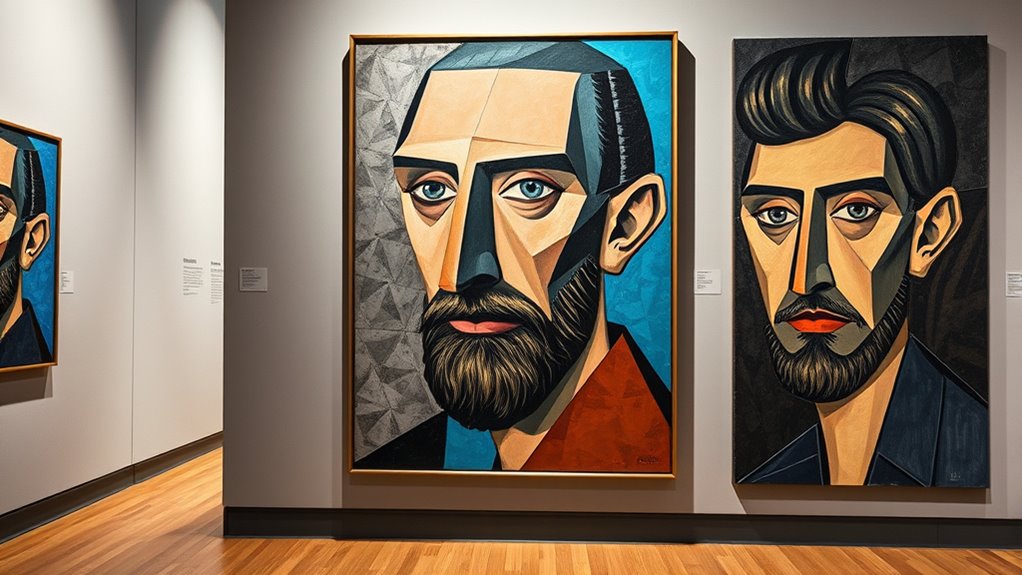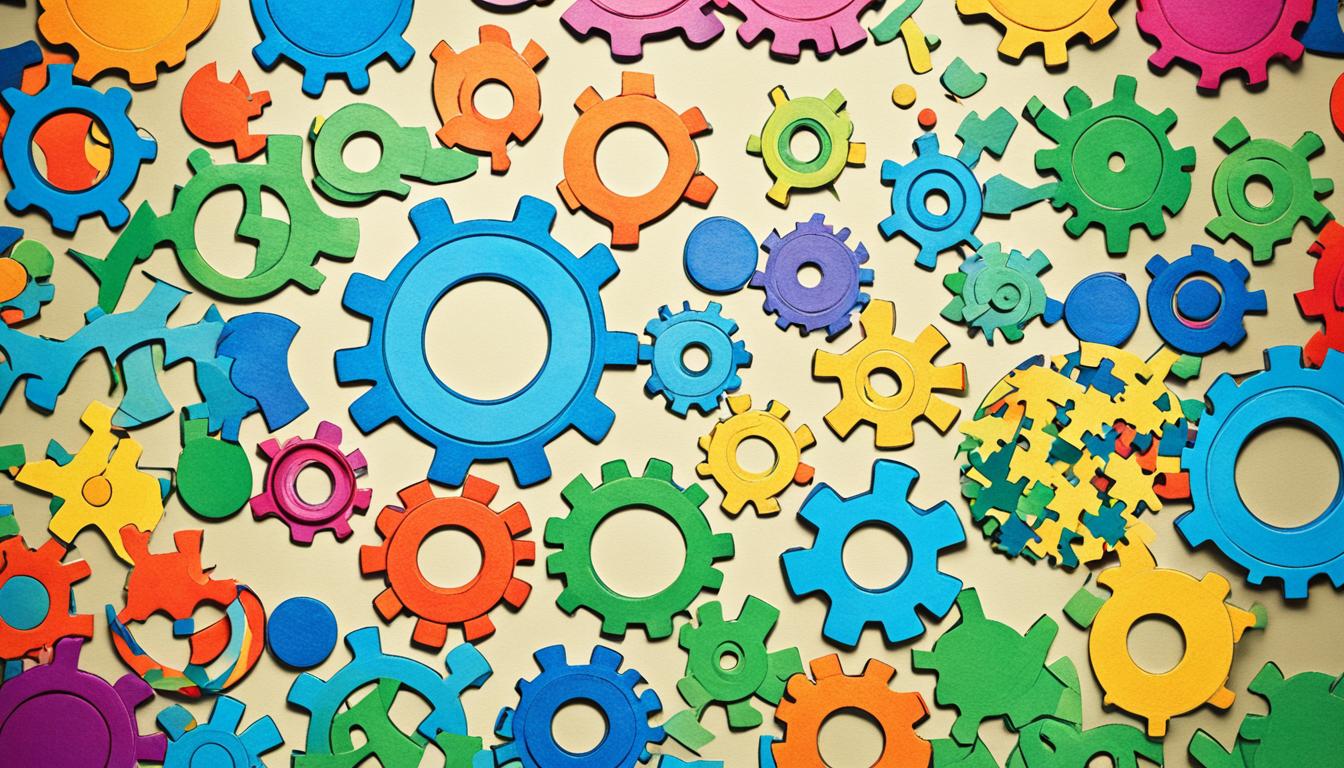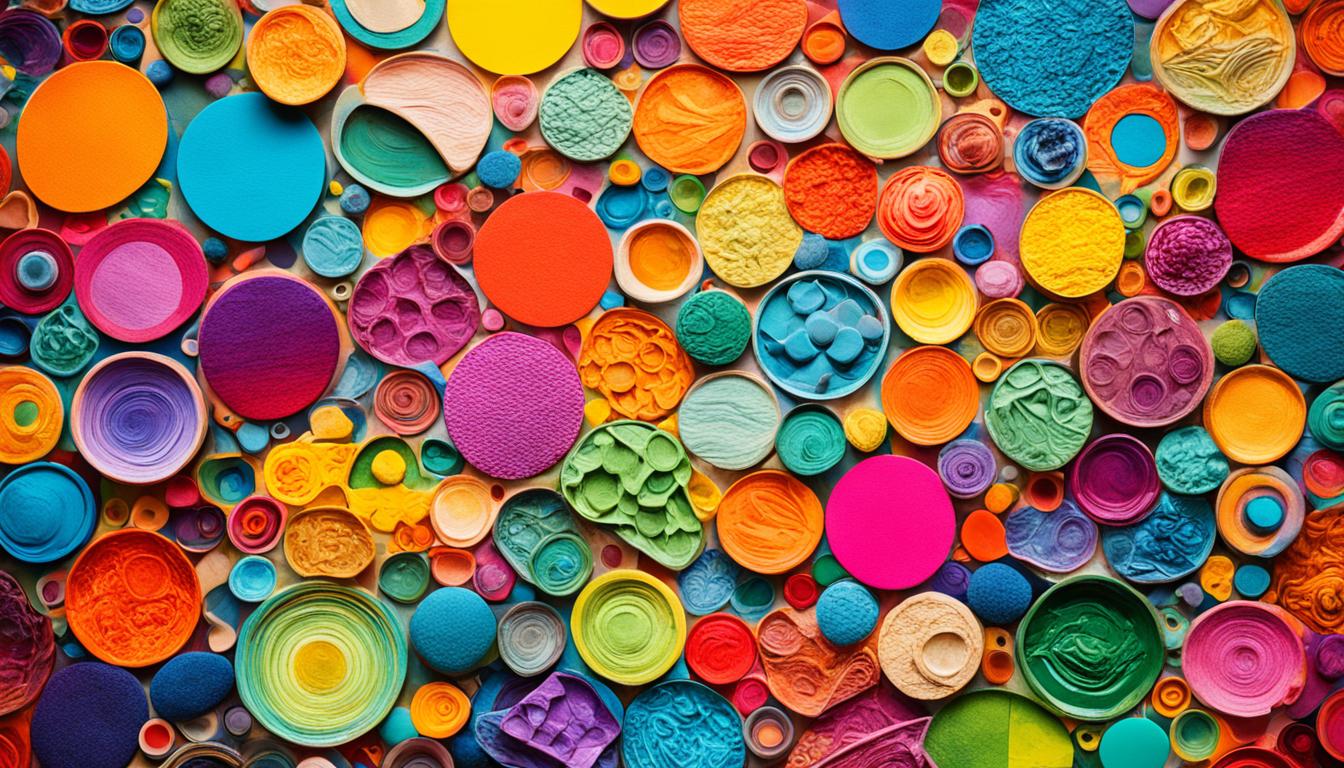Picasso revolutionized modern art by developing Cubist techniques that break away from traditional perspectives, showing multiple viewpoints at once and fragmenting objects into geometric shapes. He also pushed boundaries by integrating texture and mixed media, creating layered, textured compositions with collage elements like newspaper and fabric. These innovations challenge how you perceive form and space, blurring lines between painting and sculpture. If you keep exploring, you’ll discover how these innovations continue to influence art today.
Key Takeaways
- Picasso pioneered Cubism, breaking traditional perspectives by depicting multiple viewpoints simultaneously with geometric fragmentation.
- He integrated synthetic collage techniques, blending various textures and materials into layered, textured compositions.
- His innovations shifted focus from color to form, emphasizing muted earth tones and complex structures.
- Picasso blurred boundaries between painting, sculpture, and mixed media, redefining artistic possibilities.
- His groundbreaking methods challenged perception, inspiring future modern art movements and encouraging new ways of seeing.

Have you ever wondered how Picasso revolutionized the art world? His innovative approaches completely changed how we see and create art. One of his most significant contributions is the development of Cubist techniques. You might notice that Cubism breaks away from traditional perspectives, instead presenting multiple viewpoints simultaneously. Picasso didn’t just experiment with this style; he mastered it, dismantling the single-point perspective that had dominated Western art for centuries. By fragmenting objects into geometric shapes and reassembling them on the canvas, he allowed viewers to see different angles at once. This approach challenges your perception, making you think about form and space in a new way. The use of Cubist techniques isn’t just about style; it’s about shifting the very foundation of visual representation. Picasso’s Cubism often incorporated muted earth tones, emphasizing form over color, which further pushed the boundaries of artistic expression. Additionally, his innovative use of texture through synthetic collage added a new dimension to visual storytelling. This technique was revolutionary because it incorporated mixed media into fine art, expanding artistic possibilities beyond traditional painting. Another groundbreaking innovation was his pioneering use of synthetic collage, which took collage art to new heights. Unlike earlier collage methods that simply glued various materials onto surfaces, Picasso integrated synthetic collage into his paintings, blending different textures and materials seamlessly into the artwork. He used newspaper clippings, patterned papers, and even objects like cloth and wallpaper, transforming his canvases into layered, textured compositions. This technique allowed him to play with context and meaning, encouraging viewers to interpret the juxtaposition of images and materials. Synthetic collage wasn’t just a visual technique; it was a conceptual tool that challenged traditional notions of art’s boundaries. Picasso’s collages often carried social and political messages, making them not just visually striking but also intellectually provocative.
Through these innovations, Picasso didn’t just create new styles; he redefined what art could be. His Cubist techniques forced you to see the world from multiple perspectives, breaking away from realism and embracing abstraction. Meanwhile, his synthetic collages blurred the lines between painting, sculpture, and mixed media, pushing the limits of artistic medium and concept. These methods made your experience of his work more dynamic and engaging, inviting you to consider different layers of meaning and form. Picasso’s willingness to experiment and combine techniques transformed modern art from a static tradition into a vibrant, ever-evolving conversation. His innovations continue to influence artists today, reminding you that breaking conventions is often the key to true artistic progress.
Frequently Asked Questions
What Inspired Picasso’S Unique Artistic Style?
You’re curious about what inspired Picasso’s unique artistic style. His artistic inspirations came from various sources, including African masks, Iberian sculpture, and his own experiences. These influences led him to develop Cubist techniques, breaking traditional perspective and reassembling forms in innovative ways. His experimentation with different styles and materials pushed boundaries, allowing him to create a groundbreaking, recognizable style that transformed modern art forever.
How Did Picasso Influence Contemporary Artists Today?
You might think Picasso’s influence on contemporary artists is just about his Cubism’s legacy, but it’s deeper. Research suggests his innovative approach to form and perspective profoundly shaped modern art evolution. Today, artists experiment with abstraction, multiple viewpoints, and breaking traditional rules, all inspired by Picasso’s pioneering spirit. You can see his impact in diverse styles and mediums, proving his role as a cornerstone in shaping the future of art.
What Materials Did Picasso Experiment With?
You might be surprised to learn that Picasso experimented with mixed media and recycled objects in his artwork. He often incorporated materials like newspaper clippings, fabric, and even scrap metal to add texture and meaning. By doing this, he pushed traditional boundaries and created innovative pieces that challenged how we view art, inspiring contemporary artists to explore unconventional materials and techniques in their own work.
Did Picasso Face Criticism During His Career?
You might think Picasso’s bold visions faced only praise, but he certainly encountered artistic controversy. His unconventional styles often challenged the public reception, stirring debate like a storm on calm waters. Critics questioned his daring experiments, viewing them as disruption rather than innovation. Yet, through this turbulence, Picasso persisted, transforming resistance into recognition, proving that true artistry often walks the path of controversy—yet leaves a lasting legacy in the world of modern art.
How Did Picasso’S Personal Life Impact His Art?
You see, Picasso’s personal relationships and political views deeply influenced his art. His turbulent relationships inspired emotional, often raw, works that reveal his inner struggles. His political beliefs, especially during wartime, led him to create pieces like Guernica, condemning violence and war. These personal and political experiences fueled his creativity, making his art not just innovative but also a reflection of his life’s complexities and societal concerns.
Conclusion
You see how Picasso transformed art through innovation, through experimentation, through daring. You recognize how he challenged conventions, broke boundaries, redefined perspectives. His boldness, his creativity, his vision continue to inspire, influence, ignite change. Picasso’s legacy lives in every fractured form, every abstract line, every daring stroke. You embrace his spirit of constant reinvention, of fearless exploration, of endless possibility. In his revolution, you find your own spark to push boundaries and reshape your world.









